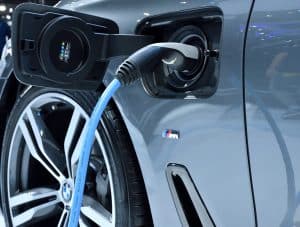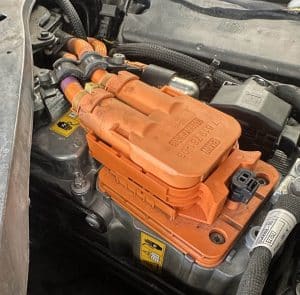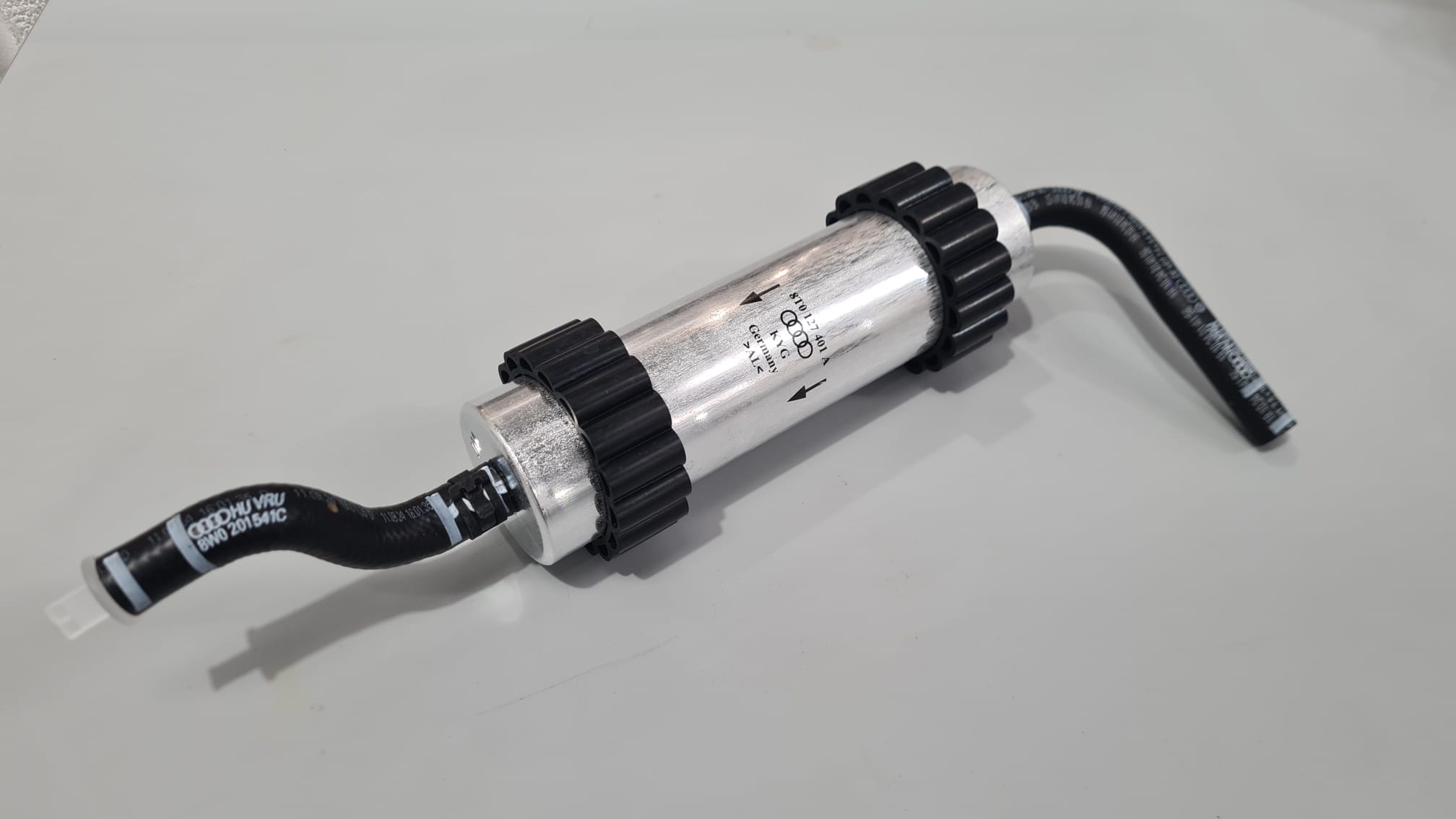BMW Charging Fault
“Your electrical machine electronics (EME) unit has failed. It can’t be repaired, so the whole unit must be replaced. With parts and labour, the total will come to just over £9,500.”
That was the stark message Mr H received from his BMW dealer when he sought help for his 2020 BMW 5 Series 530e Plug-In Hybrid. For any motorist, a figure like that is enough to make your heart sink.
At the same time, his BMW was already showing major problems. The heating and air conditioning were out of action, and the charging system could no longer replenish the high-voltage battery. The car was fast becoming difficult to depend on.
Instead of giving in to the dealer’s expensive diagnosis, Mr H turned to Standish Service Station, trusted by drivers across Wigan and Bolton. For our BMW specialists, this wasn’t the end of the story — it was the start of a challenge we were fully equipped to take on.
Read on to discover how our technicians uncovered the true cause, repaired the EME, and returned Mr H’s BMW to full working order… without the crushing dealer bill.

The First Stage in Solving the BMW Charging Fault
Our first step was a conversation with Mr H to capture the background of the fault. He described when the earliest symptoms appeared, how they had progressed, and what actions had already been taken. This gave us essential context and ensured we weren’t looking at the BMW without understanding its history.
We then connected our dealer-level diagnostic equipment and retrieved the stored fault codes. Among those recorded were:
- 21E720 – Charging electronics fault: A communication breakdown between the charger and control unit prevented the battery from charging.
- 80120E – Electric A/C compressor undervoltage/overvoltage: Instability in the voltage supply caused the electric A/C compressor to shut down.
- 8011C4 – A/C compressor voltage sensor fault: The internal sensor in the air conditioning compressor was delivering false readings about the high-voltage supply.
- 030ECD / 030EC1 – Charging management faults: The system could not regulate the charging process safely.
Individually, none of these codes provided the full answer. But when considered together, they showed a consistent pattern: the charging function, the PTC heater, and the air conditioning system were all compromised.
All three rely on the electrical machine electronics (EME) unit — the very part the dealer had already proposed replacing. For us, this was not the end of the investigation but a pointer that the real cause lay deeper in the high-voltage network.
From Wiring Diagrams to Testing: Building the Picture
Using Wiring Diagrams
Because the stored codes pointed towards shared high-voltage systems, we studied BMW’s official wiring diagrams. These detailed plans outlined exactly how the electrical network was connected and where voltage should normally appear.
Checking the Evidence
When we analysed the live data, it became clear that the A/C compressor wasn’t receiving any supply. This ruled it out as the fault. Instead, the EME unit wasn’t providing an output. The wiring diagrams also showed that the heater, charging function, and climate control all relied on this shared feed, safeguarded by a fuse inside the EME.
Applying Our Own Test Plans
To build on this, we used our own high-voltage test routines, created specifically for hybrid and electric vehicles. Such procedures aren’t routine — they require specialist high-voltage training and controlled working conditions. By carefully assessing each component, we gained a precise picture of how the systems were behaving.
Digging Into the EME Unit
Unlike the dealership, who had recommended replacing the entire unit, we opened the EME and examined it component by component. Inside, we discovered the high-voltage fuse had blown. A fuse almost never fails without reason; it usually points to excessive current being drawn elsewhere in the system.
Isolating the Culprit
We then tested each element in turn: the wiring harnesses, the compressor, the onboard charger, and finally the PTC heater. The heater readings were the ones that stood out. Resistance was well below the expected level, proving it was drawing too much current and had forced the fuse to blow.
Together, the results left no doubt: the EME itself wasn’t defective. The real issue was a failed PTC heater that had overloaded the circuit and blown the fuse — a problem we could fix directly, without replacing the whole unit.

The Precision Repairs That Solved the Issue
Once the diagnosis was complete, our team set to work on the repair:
- Sourcing the fuse: The high-voltage fuse within the EME cannot be ordered as an individual BMW part. Through our specialist suppliers, we sourced the correct component, dismantled the EME, fitted the fuse with care, and rebuilt the unit to the right standard.
- Replacing the heater: The PTC heater responsible for overloading the circuit was removed and replaced with a premium-quality part. This resolved the excessive current draw and allowed the system to function safely again.
- Final testing: With both components replaced, we carried out rigorous testing using high-voltage diagnostic tools such as a multimeter and an insulation resistance tester. The results confirmed the supply was restored, the circuits were safe, and the battery could charge correctly once more.
Thanks to this precise, component-level approach, Mr H’s BMW was restored to full health — without the £9,500 replacement the dealer had prescribed.
The Car Repaired, the Driver Relieved
The repair brought an instant improvement. The heating and air conditioning were working once more, and the high-voltage battery was charging exactly as it should. A BMW that had been close to undriveable was fully operational again.
For Mr H, the difference couldn’t have been clearer. Instead of worrying about an unnecessary £9,500 bill, he could rely on his BMW with complete confidence. The frustration of repeated faults was replaced by the relief of knowing his car was back to full health.
This was the result of expertise and precision. By solving the actual fault rather than replacing the entire unit, Standish Service Station delivered a cost-effective, lasting repair — and proved why independent experts beat the dealership every time.
Why Wigan and Bolton BMW Owners Turn to Standish Service Station
When Mr H’s BMW arrived, the dealer had already written it off with a £9,500 replacement recommendation. Instead, our technicians applied specialist high-voltage diagnostics, uncovered the real cause, and repaired it directly. That’s the strength of choosing an independent like Standish Service Station — we solve component-level problems with confidence.
Here’s what BMW drivers across Wigan and Bolton can expect from us:
- Advanced diagnostics for complex BMW electrical faults
- Honest guidance and straightforward communication
- High-quality repairs that save thousands over dealer prices
- Dealer-level tools combined with independent expertise
- …All covered by a 12-month parts and labour guarantee
Our local reputation speaks for itself. We have a {{average-rating}} star Google rating from {{review-count}} satisfied customers.
📞 Call Standish Service Station today on 01257 422899 — because your BMW deserves the right repair, not a costly replacement.


